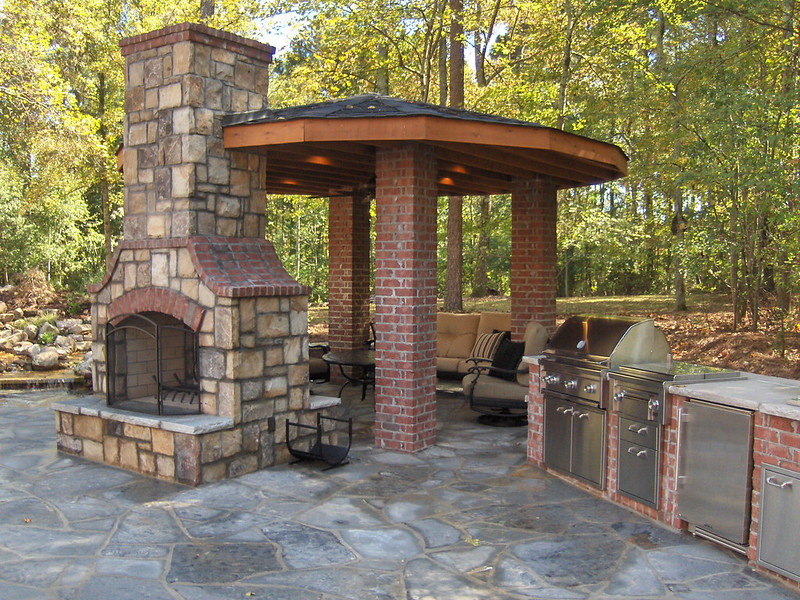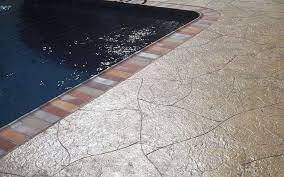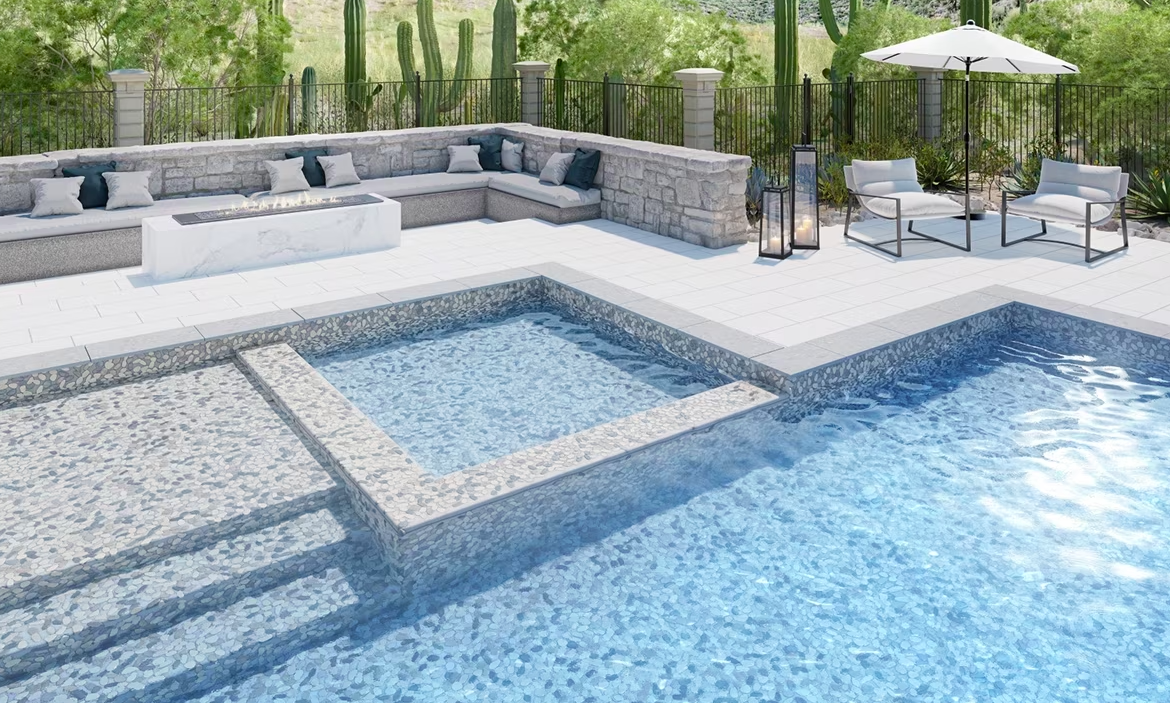Are your pavers looking worn and neglected? It’s time to roll up your sleeves and bring them back to life! In this comprehensive guide, we’ll show you how to revive your outdoor space with paver repair and brick paver repair. Plus, we’ll break down the associated costs so you can plan accordingly. Whether you’re a seasoned DIY-er or just starting out, this guide has everything you need to transform your outdoor oasis into a stunning haven once again. Let’s get started!
Brick Paver Repair
If you have noticed that your brick pavers are in need of repair, there are a few simple steps you can take to address the issue. Brick paver repair is essential to maintain the integrity and appearance of your outdoor space. Over time, brick pavers can become damaged due to various factors such as weathering, shifting of the ground, or heavy foot traffic. The first step in brick paver repair is to assess the extent of the damage. Look for any cracked, chipped, or loose pavers that need attention. Once you have identified the problem areas, you can start the repair process. Start by removing the damaged pavers and replacing them with new ones. Make sure to choose pavers that match the existing ones in terms of size, shape, and color. Next, prepare the area by removing any debris or dirt and leveling the ground. Then, apply a paver adhesive or mortar to secure the new pavers in place. Finally, fill the gaps between the pavers with sand or polymeric sand to ensure stability and prevent weed growth. By following these simple steps, you can successfully repair your brick pavers and restore the beauty of your outdoor space.
Paver Repair Cost
When it comes to paver repair cost, it’s important to consider various factors that can influence the overall expenses. Understanding these factors can help you plan and budget for your paver repair project. Here are three key factors that can impact the cost of paver repair:
- Material costs: The type of pavers you choose will greatly affect the overall cost. Different materials have different price ranges, so it’s essential to consider your budget and preferences when selecting pavers for your repair project.
- Labor costs: The complexity of the repair work and the time required to complete it will determine the labor costs. Factors such as the size of the area to be repaired, the extent of damage, and the accessibility of the area can all influence the labor costs involved.
- Additional expenses: Apart from material and labor costs, there may be additional expenses to consider. These can include the cost of removing old pavers, preparing the base, and any necessary permits or inspections.
Common Paver Issues
Experiencing shifting, settling, or surface damage are common issues that pavers encounter. These problems can occur due to various factors such as poor installation, improper base preparation, or natural wear and tear over time. Shifting pavers can create uneven surfaces, making it difficult to walk or drive on them. Settlement occurs when the base beneath the pavers sinks, causing the pavers to sink as well. This not only affects the aesthetic appeal of your outdoor space but also poses safety hazards. Surface damage, on the other hand, can include cracks, chips, or erosion, which not only diminishes the appearance of your pavers but also reduces their durability.
Identifying these common paver issues is crucial in order to address them promptly and prevent further damage. Regular inspection of your pavers can help you spot any signs of shifting, settling, or surface damage early on. By taking immediate action, you can save yourself from expensive repairs in the future. Depending on the severity of the problem, paver repair may involve simple fixes such as re-leveling or replacing individual pavers, or it may require more extensive repairs such as lifting and relaying the entire paver surface. It is important to consult a professional to assess the extent of the damage and determine the most appropriate repair solution for your specific situation.
DIY vs. Professional Repairs
For optimal results, consider the advantages and disadvantages of tackling paver repairs yourself versus hiring a professional. While DIY repairs can save you money, they require time, effort, and skill. On the other hand, professional repairs can be more expensive, but they offer expertise and efficiency. Here are three key factors to consider when deciding between DIY and professional paver repairs:
- Skill and Experience: Repairing pavers requires knowledge of the materials, tools, and techniques involved. If you have experience working with pavers and feel confident in your abilities, DIY repairs may be a viable option. However, if you lack the necessary skills or have never worked with pavers before, it is best to leave the job to a professional.
- Time and Effort: Paver repairs can be time-consuming and labor-intensive. If you have the time and energy to dedicate to the project, DIY repairs can be a rewarding endeavor. However, if your schedule is already packed or if you prefer to spend your free time on other activities, hiring a professional can save you valuable time and effort.
- Quality and Longevity: Professional paver repair services often come with a guarantee or warranty, ensuring that the repairs are done to a high standard. This can provide peace of mind and assurance that the repairs will last. DIY repairs, on the other hand, may not offer the same level of quality and longevity unless you have the necessary expertise and attention to detail.
Ultimately, the decision between DIY and professional paver repairs depends on your skill level, available time, and desired outcome. Carefully weigh the advantages and disadvantages before making a choice that best suits your needs.
Case Studies and Examples
If you’re considering paver repairs, it’s helpful to look at real-life examples and case studies that showcase successful projects. These examples can give you a better understanding of what can be achieved and provide inspiration for your own outdoor space. One case study involved a homeowner who had a sunken patio with uneven pavers. They hired a professional paver repair contractor who assessed the situation and determined that the underlying soil needed to be stabilized. The contractor used a technique called polyurethane foam injection to lift the sunken areas and level the pavers. The end result was a patio that looked brand new and was safe to walk on. Another example involved a brick paver driveway that had become cracked and faded over time. The homeowner decided to tackle the repair themselves by replacing the damaged bricks and applying a fresh coat of sealer. With some patience and a little elbow grease, they were able to restore their driveway to its former glory. These case studies show that paver repair projects can be successful and provide long-lasting results.
Maintenance and Prevention
To ensure the longevity of your outdoor space, it is crucial to implement regular maintenance and preventive measures for your pavers. By following these simple steps, you can keep your pavers in top condition and avoid costly repairs in the future:
- Sweep regularly: Keep your pavers clean by sweeping away debris such as leaves, dirt, and twigs. This will prevent them from accumulating and causing damage over time.
- Seal your pavers: Applying a protective sealant to your pavers can help prevent stains, cracks, and fading caused by weather elements and everyday wear and tear. Make sure to reapply the sealant every few years for maximum protection.
- Address issues promptly: If you notice any signs of damage, such as loose or cracked pavers, it is important to address them promptly. Ignoring these issues can lead to further damage and more expensive repairs down the line.
Call to Action
Now that you understand the importance of maintaining your pavers, it’s time to take action and bring your outdoor space back to life. Don’t let your worn-out pavers continue to detract from the beauty and functionality of your outdoor area. Instead, reach out to professionals who specialize in paver repair and let them handle the job for you. Whether you need to fix cracked brick pavers or replace sunken ones, these experts have the knowledge and skills to get the job done right.
You don’t have to tackle paver repair on your own. By contacting professionals, you can save yourself time, effort, and potentially costly mistakes. They will assess the current condition of your pavers and provide you with the best repair options based on your specific needs. Additionally, they can offer guidance on how to prevent future damage and maintain the longevity of your pavers.
To take the first step towards reviving your outdoor space, reach out to reputable paver repair companies in your area. Request quotes and compare their services to find the one that suits your budget and requirements. Don’t delay – with professional help, you can transform your outdoor space and create an inviting environment for you and your loved ones to enjoy for years to come.
Key Takeaways
- Assess the extent of damage and identify cracked, chipped, or loose pavers.
- Remove damaged pavers and replace them with new matching pavers.
- Secure new pavers with adhesive or mortar and prepare the area by removing debris and leveling the ground.
- Fill gaps between pavers with sand or polymeric sand to restore the beauty of your outdoor space.





